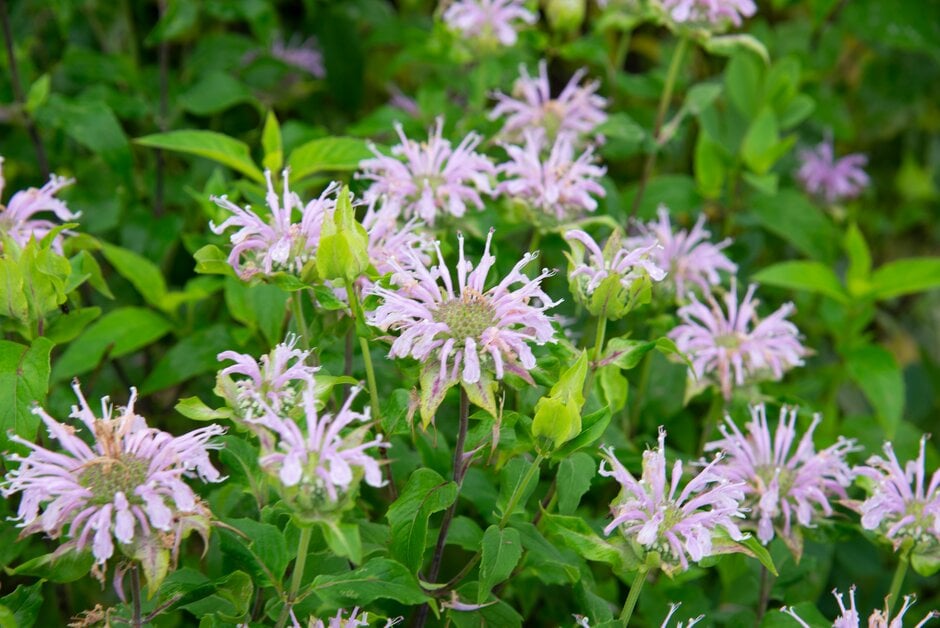Monarda fistulosa
American wild bergamot
A clump-forming perennial to 1.2m tall, with bushy, branching stems and dull, mid-green, lance-shaped, aromatic leaves up to 10cm long. From mid-summer to early autumn produces whorls of two-lipped, tubular, pale purple or pale, dusky pink flowers with purple-tinged bracts and a pale green centre
Size
Ultimate height
1–1.5 metresTime to ultimate height
2–5 yearsUltimate spread
0.1–0.5 metresGrowing conditions
Moisture
Moist but well–drainedpH
Acid, Alkaline, NeutralColour & scent
| Stem | Flower | Foliage | Fruit | |
| Spring | Green | |||
|---|---|---|---|---|
| Summer | Pink | Green | ||
| Autumn | Pink | Green | ||
| Winter |
Position
- Full sun
- Partial shade
Aspect
East–facing or South–facing or West–facing
Exposure
Exposed or Sheltered Hardiness
H5Botanical details
- Family
- Lamiaceae
- Native to GB / Ireland
- No
- Foliage
- Deciduous
- Habit
- Clump forming
- Genus
Monarda can be annuals or clump-forming herbaceous perennials with aromatic, ovate leaves and terminal whorls of 2-lipped, tubular flowers from summer to early autumn
- Name status
Correct
How to grow
Cultivation
Grow in fertile, humus-rich, moist but well-drained soil in full sun or partial shade. Protect from excessive winter wet and do not allow to dry out in summer. Lift and divide every three years
Propagation
Propagate by division in early spring, before new growth begins, or by basal softwood cuttings
Suggested planting locations and garden types
- Cottage and informal garden
- Prairie planting
- Wildlife gardens
- Flower borders and beds
Pruning
Deadheading regularly should encourage more flowers. Cut stems down to the ground in autumn, or leave seed heads for winter structure
Pests
May be susceptible to slugs, especially in spring
Diseases
May be susceptible to powdery mildews, especially in hot, dry weather
Get involved
The Royal Horticultural Society is the UK’s leading gardening charity. We aim to enrich everyone’s life through plants, and make the UK a greener and more beautiful place.
